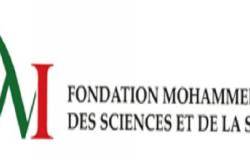The Swiss more often use generics.Image: KEYSTONE
Since 2024, the share for brand medicines has been significantly increased. This has had effects, as an exclusive evaluation of the SWICA sick person now shows for the first time.
14.04.2025, 16:5414.04.2025, 16:54
Florence Vuichard / ch media
Whether it is a cholesterol or hypertension medication, therapy against sclerosis in plates or a cortisone nasal spray, the purchase of a drug reimbursed by the diseases can be expensive. Because since the beginning of 2024, those who opt for the original medication instead of the credits must assume a 40% share, against 10% before.
With this review of the order, the Federal Council aimed to increase the market share of generics and biosimilars (generic versions of biopharmaceuticals), which are relatively cheap, and thus to slow down the increase in Health costs.
Several experts doubted the effectiveness of the measure at the time. Because people who take many drugs reach the annual ceiling of 700 francs of quotations anyway-simply a little earlier with this new rule.
Patients are more often than often to the generics
But the skeptics had not provided for the reaction of the patients: because the increase in the share seems to be bear fruit, as shown by the data analysis of the SWICA fund for several drugs. For example, the number of insured people at SWICA which take the treatment of Crestor cholesterol almost halved in one year.
At the same time, the number of people who have opted for an appropriate generic increased in 2024 compared to 2023. The same scheme is observed in evaluations concerning the drug against cholesterol Atozet and the anti -hypertensive exforge HCT of Novartis.
For the treatment of sclerosis in Gilenta plates, also marketed by Novartis, the number of SWICA insured people using it even decreased by three -quarters. And this is paying: according to figures of 2024, a patient under Gilenta costs an average of 8,896 francs per year in Swica, while a patient taking the corresponding credits only costs 4,555 francs per year.
“So there are notable differences”
-Oliver Steimann, spokesperson for Swica.
An interesting economy potential
The differences are less impressive for the Crestor: the costs amount here to 219 francs per year and per person, against 141 francs for the corresponding credits. But the number of people who use cholesterol and hypertension medications is much higher than those who need treatment against multiple sclerosis:
“The economy potential is therefore also interesting”
Oliver Steimann, spokesperson for Swica.
Other insurance-maladie have probably had experiences similar to those of Swica. The Federal Office for Public Health (FOSP) is not yet able to present detailed statistics “at present”, as it specifies to us. However, the Office refers to a presentation of a consulting firm for the Association of the Pharmaceutical Industry (VIPS).
This shows that in 2024, sales of brand medication in Switzerland decreased by 14%, or 86 million francs, while those of generics increased by almost 13%, reaching 118 million francs. With regard to organic active ingredients, sales of brand medicines have dropped by nearly 106 million francs, those of biosimilars have increased by just over 50 million francs.
Economy objective: 300 million francs
The objective of the Federal Council was to save 300 million francs per year thanks to the increase in the share. The OFSP trusts that this objective will be achieved-especially since another reform going in the same direction has come into force since mid-201. This eliminates erroneous incentives in the distribution of drugs.
Previously, the income of pharmacies, hospitals and doctors were linked to the price of medicines. The higher the price of the medication, the more money care providers received money.
The amount they receive is now fixed and no longer depends on the price of medicines. Promoters of the reform hope that this too should stimulate the sale of generics and biosimilars, compared to cheaper – and have repercussions on the statistics of health insurance funds.
Translated and adapted from German by Léa Krejci









